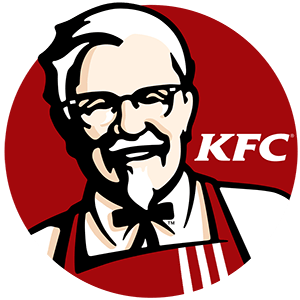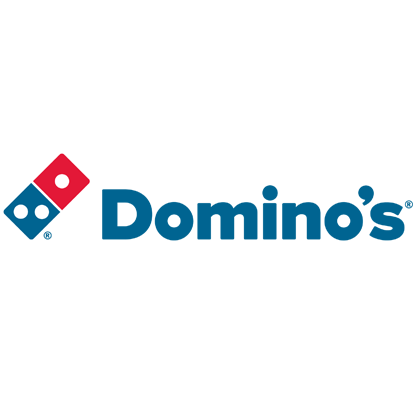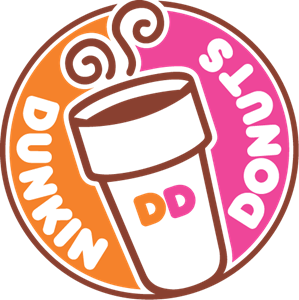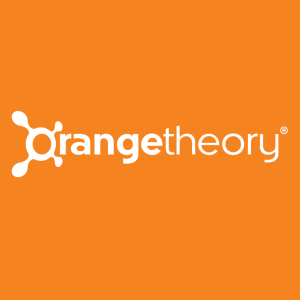Franchise Stats And Figures For Small Businesses (2025)
Wondering what statistics and figures for franchises and small businesses across the U.S. are? Let’s find out together.

Table of Contents:
Wondering what franchise stats and figures for franchises and small businesses across the U.S. are? Let’s find out together. We will first look at small businesses and then move on to franchises.
What is a Small Business?
A small business is generally defined by the Small Business Administration (SBA) as one that has fewer than 1,500 employees and a maximum of $38.5 million in average annual receipts. While that definition will change depending on who you ask, the SBA also defines small businesses by industries.
How many Small Businesses exist in the U.S.?
As per SBA’s 2021 Small Business Profile, there are 32.5 million small businesses across the U.S., with 61.2 million people being employed in small businesses. That is roughly 99.9% of all businesses in the United States and around 46.8% of all employees in the country.
What is the distribution of employees in Small Businesses?

Figure 1 shows the distribution of employment by business size in the United States. Firms with 29 to 99 employees have the largest share of small business employment. The median income for self-employed individuals at their own incorporated companies was $51,816 in 2018. For self-employed individuals at their own unincorporated firms, the median income was $26,084.
A total of 292,793 firms exported goods from the United States in 2018. Of these, 285,334, or 97.5%, were small businesses, which generated 32.0% of the United States’ $1.5 trillion in total exports.
Which industries have the most Small Business employment?
According to the SBA, Health Care and Social Assistance was the largest employer of small businesses in 2017. As a result of this industry’s employment of 8,984,159, only 44% of the total private employment in the industry of 20,241,438 were employed by small businesses.
If, however, we compare by percentages, the highest categorized industry is Construction. Of the total 6,533,061 people employed in the private sector construction industry, around 5,373,702 are employed by small businesses. That is approximately 82.3%.
How did franchising start?
In the early days of franchising in the United States, an enterprising druggist named John Pemberton began one of America’s first successful franchise operations. In 1886, he concocted a beverage containing sugar, molasses, spices, and cocaine. He licensed select people to bottle and sell the drink, which was an early version of what is now known as Coca-Cola. As one of the first franchise operations in the United States, his was one of the most successful.
The United States is a leader in the franchising model, a position it has held since the 1930s when it used the approach for fast-food restaurants, food inns, and, slightly later, motels at the time of the Great Depression.
How many franchises exist in the country today?
In 2020, it is estimated that there were around 753,700 franchise establishments in the United States, producing about 670 billion U.S. dollars and employing 7.5 million people. The largest segment of the franchising industry is quick-service restaurants, comprising over 241 billion dollars of the industry’s total economic output, followed by business services with around 121 billion dollars. The top five are franchises in full-service restaurants, real estate, and commercial and residential services.
How much do franchises produce?

The franchise industry forms a strong segment of the U.S. economy. In 2021, the industry is expected to have produced $780 billion worth of value. Between 2013 and 2019, the industry grew constantly – from $571 billion in 2013 to $787.5 billion. That growth amounts to a growth rate of 37.9% – an average growth rate per year of just more than 5.2%.

Employment also tracks the GDP figures above. Between 203 and 2019, the franchise industry grew from 6.96 million people employed to over 8.43 million people employed by the time that 2019 ended.
How is the U.S. franchise industry divided?

The biggest sector by far in the U.S. franchising industry for years has been Quick-Service Restaurants. These include franchises like KFC, Domino’s, and Dunkin’. The second spot is currently held by Retail food, products, and service, followed in a close third place by business services. The graphic below from data collected by the Census Bureau provide numbers on how many franchises existed in which industry when the last North American Industry Classification System survey, which is done every five years, was done in 2017.

What are the fastest growing franchising industries in the United States?
According to franchise.org, businesses in the Personal Services industry are expected to lead growth in the franchising industry in 2022 at a rate of 3.1%. The Commercial & Residential Services sector will remain the second-fastest-growing sector in 2022 because of the relative strength of the U.S. housing market, in which the number of establishments is anticipated to expand by 2.7% over the year. Full-Service Restaurants (FSRs), Quick Service Restaurants (QSR), and Lodging franchises are also expected to continue to grow after the pandemic, with franchise establishments in those industries expected to improve by 2.5%, 2.1%, and 1.3%, respectively.
The top 10 states for franchise growth in 2022 are projected to be: Texas, Florida, Arizona, South Carolina, Idaho, Tennessee, North Carolina, Utah, Montana, and Nebraska.
Biggest sector: QSR
Fast food restaurants, also known as quick-service restaurants (QSRs) or limited-service restaurants (LSRs), are establishments that typically serve food fast (no pun intended) and do not provide table service. Variations of the quick-service concept mainly consist of fast-casual restaurants, food trucks, kiosks, and smaller hole-in-the-wall establishments.
The Food and Beverage industry in the USA accounts for 13% of all manufacturing employment in the country. Around 1.46 million people are employed in this industry. Food franchises make up to 36% of the total franchise establishments in the USA, and it is expected to create 1.6 million more jobs by 2027. The annual growth rate in the industry is around 2% and the EBITDA multiplier is around 3x for a single restaurant. Multiples can go up to 7x for 5+ restaurants.
Types of QSR
There are two types of QSR: company-owned and franchised locations. Company-owned stores are managed by qualified and experienced employees of the company, whereas the franchise model sees an entrepreneur invest their own money into the project. The franchisee becomes the owner of the restaurant once they pay the initial start-up fees, and it is their responsibility to ensure the success of the store. In the United States, the number of franchised stores in the QSR industry was estimated to be around 183,543 thousand in 2020, and the output of those franchise businesses was projected to generate approximately 265 billion U.S. dollars in 2021.
For example, 89.2% of franchise establishments in the Outdoor Advertising industry were franchisor-owned in 2017, an increase of 1.6% from 2007. In contrast, 100% of new car dealers were franchisee-owned in 2017. Broadly speaking, however, most franchise industries in 2017 were franchisee-owned.

The market size for the quick service restaurant (QSR) industry in the U.S. was $256.03 billion in 2020, down from the previous year’s total of $295.91 billion. In 2021, the market size was forecast to reach $296.55 billion. QSRs are sometimes referred to as limited-service restaurants (LSRs) but are more commonly known as fast-food restaurants.


The number of quick-service restaurant (QSR) franchise establishments in the United States has fluctuated between 2007 and 2021. In 2020, it was estimated that there were 183,543 quick-service restaurant franchise establishments in the United States. Quick service restaurants include limited-service eating places, cafeterias, fast-food restaurants, beverage bars, ice cream parlors, pizza-delivery establishments, carryout sandwich shops, and carryout service shops with on-premises baking of donuts, cookies, and bagels.
Employment in the quick-service restaurant (QSR) franchise industry in the United States gradually increased from 2007 to 2019. In 2020, the number of employees in this sector decreased for the first time in ten years as a result of the coronavirus (COVID-19) pandemic. That year, there were an estimated 3.54 million employees in the QSR franchise industry in the United States. This figure showed a decrease of 8.7 percent when compared to the previous year’s total of 3.88 million.
What are the 3 most popular franchises in the country?
1. McDonad’s

The most famous yet most lucrative U.S.-based franchise is McDonald’s, bringing in over 93 billion U.S. dollars in sales. Following McDonald’s was 7-Eleven, collecting 92 billion U.S. dollars in sales. In 2020, McDonald’s generated 11 billion U.S. dollars in revenue from its franchised restaurants. The first step in contributing to McDonald’s economic franchise success is the startup cost.
Founded in 1948 by the two brothers, Maurice and Richard McDonald, McDonald’s currently has over 38,000 locations open across more than 119 countries. Amongst the extensive requirements to join their renowned franchise system, the company requires potential franchisees to have previously managed or owned a McDonald’s restaurant and to have a minimum net worth of $1,263,000 and liquid assets totaling at least $500,000.
The total investment amount to establish a unit is $2,235,000, and once operations begin, the franchisee is expected to pay the parent company a Royalty Fee and a Marketing Fee of 4% each. Despite the high investment amount and meticulous profile the franchisor is seeking, however, the franchise’s popularity remains high amongst potential investors, particularly given that Mc Donald’s was ranked #1 in QSR Magazine’s top 50 of 2019. If interested in becoming a McDonald’s franchisee, read our article to learn more about the concept and begin your application process today
2. Orange Theory

Named by Forbes as the fastest-growing woman-owned company of 2017, Orange Theory was founded in 2009 when Elle Latham, decided to open a gym to implement her personally designed workout. The concept, which became known for its demanding workout sessions that alternated between cardiovascular and strength training, today has over 1,000 locations across 18 countries and 49 states. Amongst the numerous requirements to become an Orange Theory franchisee, prospective candidates must be willing to run the business on a daily basis, have a net worth of $500,000, and liquid assets totaling at least $150,000.
The total investment amount to establish an Orange Theory location ranges from $575,422 to $1,497,732 and the franchisee is expected to pay the parent company a Royalty Fee of 8% and a Marketing Fee of 2% on gross sales each. The company was ranked amongst the top 50 franchises in the Entrepreneur’s Franchise 500 list of 2019 after the average gross revenue for franchised studios in 2018 was $1,142,442. If interested in becoming an Orange Theory franchisee, read our article to learn more about the concept and begin your application process today!
3. Taco Bell

Founded in 1962 by Glen Bell, Taco Bell currently has over 6,000 franchised stores in the United States and another 500 across international markets. Amongst the numerous requirements to become a franchisee, candidates looking to own a Taco Bell franchise must have previous experience in the restaurant management industry and have enough capital to support a multi-unit franchise development which involves having a minimum net worth of $1,500,000 and liquid assets totaling at least $750,000.
The total investment amount to establish a Taco Bell franchise ranges from $525,524 to $2,956,765 and once the store begins operations, franchisees are expected to pay the parent company a Royalty Fee of 5.5% and a Marketing Fee of 4.25% on gross sales each. Despite the high investment amount to join their franchise system, Taco Bell was ranked #4 in QSR Magazine’s top 50 of 2019 which accounts for the system’s continued popularity amongst prospective franchisees. If interested in becoming a Taco Bell franchisee, read our article to learn more about the concept and begin your application process today!
Conclusion
In conclusion, the franchising industry is a huge part of the small business industry and a lucrative way to make money once you put in the time and money to make it happen. Have a look at the listings we have on Vetted Biz and see if any of the opportunities suit you.
Sources: Statista, Census Bureau, Vetted Biz, SBA, franchise.com






